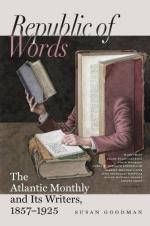Wine Harbor, almost at the eastern extremity of the peninsula, has, it appears from this official statement, “the distinction of having produced a larger amount of gold during 1863 than any other district in the Province. During each one of five out of the last six months of the year, it showed the highest maximum yield of gold per ton of quartz;[Q] and on the whole year’s operations it ranks next to Sherbrooke in the average amount produced per man engaged in mining.” In the table giving the entire returns of gold for the year, the whole yield of the Wine-Harbor mines is set down as 3,718 oz. 2 dwt. 19 gr.,—equal, at the present price of gold in New York and Boston, to about $125,000 for the twelve months,—certainly a very hopeful return for a first year’s operations. It is evident that the Commissioner regards this district and the neighboring one of Sherbrooke, as specially entitled to his consideration, for he continues,—“Here, as at Sherbrooke, gold-mining has become a settled business; and the prospects of the district are of a highly satisfactory character.” But he adds, (p. 7,)—“From every one of the gold-districts, without exception, the accounts received from the most reliable sources represent the mining-prospects to be good, and the men engaged in mining to be in good spirits,—content with their present success and future prospects.” To those who consider the accounts of Nova-Scotia gold as mere myths we commend the attentive study of these Government returns. “Miners’ stories” are one thing,—but a certified royalty from a staff of British officials, in ounces, pennyweights, and grains, on the first day of each month, is, in our modest opinion, quite another. They “have a way of putting things,” as Sydney Smith expressed it, which is apt to be rather convincing.
It would not be surprising, if so marked an addition to the resources of a small, and not an eminently wealthy Province, had been productive, in some degree, of excitement, idleness, and disorder. But we have reason to believe that hitherto this has not been found to be the case. Lord Mulgrave bears willing testimony to “the exemplary conduct of the miners,” and Mr. Creelman, the late Chief-Commissioner, is still more explicit. “It affords me the highest satisfaction,” he concludes, “to be able to bear testimony to the orderly conduct and good behavior of those who have hitherto undertaken to develop the resources of our gold-fields. I have visited every gold-district in the Province twice, and, with one or two exceptions, oftener, during the past season; I have seen the miners at work in the shafts and trenches; I have noticed them in going to and returning from their work, at morning, noon, and night; I have witnessed their sports after the labors of the day were over; and I have never heard an uncivil word nor observed an unseemly action amongst them. And although the ‘Act relating to the Gold-Fields’ authorized the appointment of a bailiff in every gold-district, it has not been deemed necessary to make more than three such appointments, and, with one single exception, no service from any of these officers has been required.... It may be said, in general, that the respect for law and order, the honest condition, and the moral sentiment which pervade our gold-district, are not surpassed in many of the rural villages of the country.”




